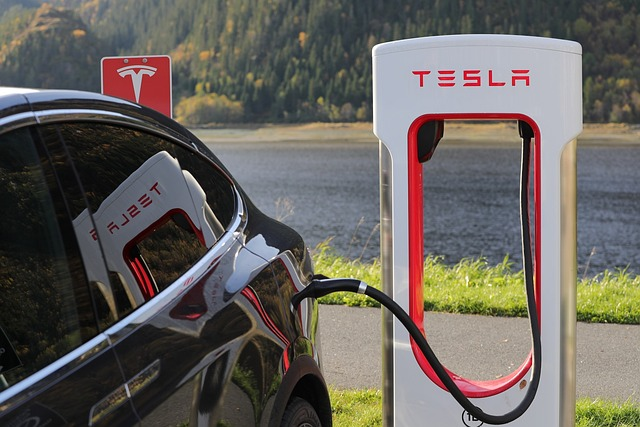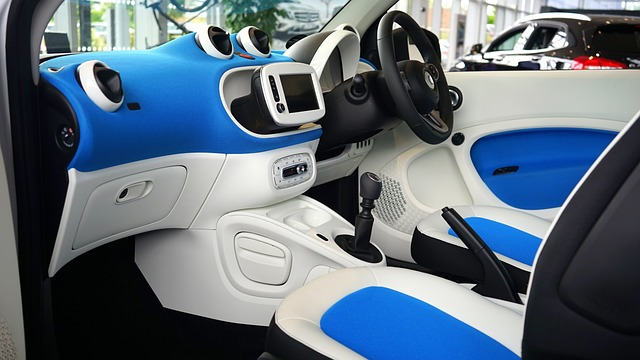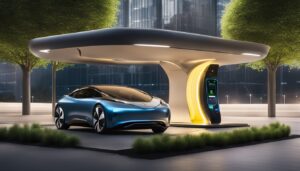Table of Contents
All that is happening in the auto world in terms of technology in 2024 was impossible many years ago, considering how minor technology was.
For instance, who would have thought that we would have self-driving cars navigating city streets or Teslas zooming around on electric power, not to mention the fancy features? We now have everything, and we can only appreciate the relentless efforts of the visionaries.
Back then, a built-in cup holder was one of the heights of automotive innovation we can see in classic cars, as we have them in various models with Dyler.
But these days, thanks to the ever-growing power of P.C. technology, our cars are becoming more like our living rooms, giving us a high level of comfort. Join us as we will be discussing this topic before us.
The Rise of Autonomous Vehicles
Automated or self-driving cars were initially merely images or figments of an artist’s imagination. But in 2024, we will return to envisioning progress in PC technology with the incorporation of artificial intelligence, which has made self-driven cars possible.
Many prominent players such as Tesla, Waymo, and Uber have achieved some progress in realizing self-driving cars; certain car models now also drive on city roads and highways with the help of a human only occasionally.
Also, Tesla, a leader in the electric vehicle market, has integrated its Autopilot system with advanced PC technologies, enabling its cars to handle complex driving tasks. In 2023, Tesla’s Full Self-Driving (FSD) beta became available to a broader audience, showcasing features like automated lane changes, parking, and even urban driving.
We cannot overlook Waymo, a subsidiary of Alphabet Inc., which has also made remarkable progress. In 2020, Waymo launched a fully autonomous ride-hailing service in Phoenix, Arizona, using a fleet of modified Chrysler Pacifica minivans equipped with cutting-edge PC and AI systems.
By 2024, Waymo had expanded its services to several cities, demonstrating the viability of autonomous taxis in urban environments.
We also have Uber, which has been investing heavily in autonomous vehicle technology. In 2022, the company partnered with Aurora, an autonomous vehicle technology startup, to integrate Aurora’s Driver platform into its ride-sharing network.
This collaboration has accelerated Uber’s efforts to deploy self-driving cars on a larger scale, aiming to enhance safety and efficiency in transportation.
Furthermore, these advancements are not limited to passenger vehicles. Autonomous trucks are also being developed to revolutionize the logistics industry.
For instance, companies like TuSimple and Embark are testing self-driving trucks that can travel long distances with minimal human oversight, promising to increase efficiency and reduce costs in freight transportation.
How Autonomous Vehicles Work

Image Source: Pixabay
Self-driving or autonomous cars use many cameras, sensors, radars, and lidars to see the environment around them. These are dealt with by highly effective onboard computers that employ various algorithms to calculate driving decisions in real-time.
These systems can improve over time, so machine learning algorithms are utilized to build systems that help the car learn from every trip and improve its ability to handle different driving situations.
Electric Vehicles: The Future of Clean Transportation
Electric vehicles (EVs) have gained substantial traction over the past decade, with 2024 marking a significant milestone in their adoption.
Environmental concerns, regulatory mandates, and advancements in battery technology are driving the shift from internal combustion engines to electric power.
Advancements in Battery Technology
The heart of any electric vehicle is its battery, and recent developments have significantly improved its efficiency and capacity, even though there have been complaints about the battery’s ability in very high cold temperature areas.
Solid-state batteries, which offer greater energy density and faster charging times compared to traditional lithium-ion batteries, are on the horizon.
This breakthrough is expected to extend the driving range of EVs and reduce the time required to recharge, addressing two of the main concerns of potential EV buyers.
Charging Infrastructure Expansion
Another area of importance is the increase in the availability of charging facilities, which is the major determinant in the increased uptake of electric vehicles.
Electric utilities and auto manufacturers are increasing the development of new charging points, so electric car owners can easily find a proper recharge spot.
Another development under consideration regards wireless charging or the ability to keep an electric vehicle moving by charging it without cables or any additional effort.
Enhanced In-Car Experiences

Image Source: Pixabay
Another transforming area due to PC technology in 2024 is the best in-car experience. All efforts have been made to give vehicle owners. Notable in-car transformations include:
Infotainment Systems
Modern cars are equipped with sophisticated infotainment systems that provide entertainment, navigation, and connectivity features.
These systems are powered by high-performance processors and run on advanced operating systems, offering a seamless and intuitive user experience.
Integration with Smart Devices
Today’s infotainment systems can connect to smartphones, smartwatches, and even home automation systems. This addition allows drivers and passengers to control various aspects of their digital lives from the comfort of their vehicles.
Whether it’s adjusting the thermostat at home, accessing favourite playlists, or getting real-time traffic updates, the car becomes a central hub for managing day-to-day activities.
Advanced Driver Assistance Systems (ADAS)
Advanced Driver Assistance Systems (ADAS) are designed to enhance safety and convenience by providing real-time assistance to drivers.
These systems leverage PC technology to monitor the vehicle’s surroundings and assist with tasks such as parking, lane-keeping, and collision avoidance.
Key ADAS Features:
- Adaptive Cruise Control: Automatically adjusts the vehicle’s speed to maintain a safe following distance from the car ahead.
- Lane Departure Warning: Alerts the driver if the vehicle starts to drift out of its lane without signaling.
- Blind Spot Detection: Monitors the vehicle’s blind spots and warns the driver of any approaching vehicles.
- Automatic Emergency Braking: Detects potential collisions and applies the brakes to prevent or mitigate the impact.
Connectivity and IoT Integration

Image Source: Pixabay
Vehicle-to-Everything (V2X) Communication
Vehicle-to-Everything (V2X) communication is an emerging technology that enables vehicles to communicate with each other and with infrastructure such as traffic lights and road signs.
This connectivity enhances safety and efficiency by allowing vehicles to share information about their speed, position, and direction.
Benefits of V2X Communication
- Improved Traffic Flow: By coordinating with traffic signals and other vehicles, V2X can reduce congestion and improve overall traffic flow.
- Enhanced Safety: V2X can warn drivers of potential hazards, such as an approaching emergency vehicle or a car running a red light.
- Optimized Fuel Efficiency: By anticipating traffic conditions and adjusting driving behavior accordingly, V2X can help reduce fuel consumption and emissions.
Over-the-Air Updates
Gone are the days when vehicle updates required a trip to the dealership. Thanks to advances in PC technology, many modern cars can receive over-the-air (OTA) updates.
This capability allows manufacturers to remotely update the vehicle’s software, adding new features, improving performance, and addressing any security vulnerabilities.
Advantages of OTA Updates
- Convenience: Owners can receive updates without having to schedule a service appointment.
- Continuous Improvement: Vehicles can be kept up to date with the latest technology and enhancements.
- Cost Savings: OTA updates can reduce the need for physical repairs and recalls, saving both manufacturers and consumers time and money.
The Role of Artificial Intelligence and Machine Learning
Personalized Driving Experiences
Artificial intelligence (AI) and machine learning are playing a crucial role in transforming the driving experience. These technologies enable vehicles to learn from the driver’s behavior and preferences, offering personalized recommendations and adjustments.
Examples of Personalization
- Customizable Profiles: Drivers can create profiles that adjust the seat position, mirror angles, climate control settings, and infotainment preferences automatically.
- Driving Style Adaptation: The vehicle can adapt its performance and handling characteristics based on the driver’s style, providing a more enjoyable driving experience.
Enhanced Safety Features
AI and machine learning are also enhancing vehicle safety by enabling more sophisticated monitoring and decision-making capabilities.
- Driver Monitoring Systems: These systems use cameras and sensors to monitor the driver’s attention and alertness, providing warnings or taking corrective actions if necessary.
- Predictive Collision Avoidance: AI can analyze data from the vehicle’s surroundings to predict potential collisions and take proactive measures to avoid them.
Wrapping Up
The use of PC technology in vehicles is changing the face of the auto market by providing drivers and passengers comfort, security and unique identification.
In addition to self-driving cars and systems for electric powertrains, on-board networks and information processing, outstanding infotainment solutions, and V2X many cars of 2024 are more selective, networked and intelligent than their predecessors.
Looking at the present rates of advancement in technology, the future holds greater promises for even more appealing next-generation advanced experiences when behind the wheel and in the transportation system.









